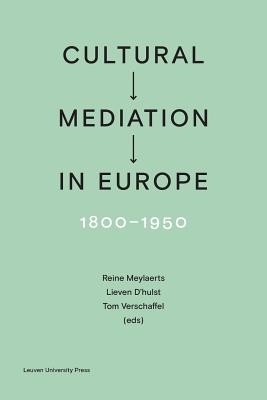
- We will send in 10–14 business days.
- Publisher: Leuven University Press
- ISBN-10: 9462701121
- ISBN-13: 9789462701120
- Format: 15.6 x 23.4 x 1.2 cm, softcover
- Language: English
- SAVE -10% with code: EXTRA
Cultural Mediation in Europe, 1800-1950 (e-book) (used book) | bookbook.eu
Reviews
Description
From the early nineteenth century till the middle of the twentieth century, cultures in Europe were primarily national. They were organized and conceived of as attributes of the nation states. Nonetheless, these national cultures crossed borders with an unprecedented intensity even before globalization transformed the very concept of culture. During that long period, European cultures have imported and exported products, techniques, values, and ideas, relying on invisible but efficient international networks. The central agents of these networks are considered mediators: translators, publishers, critics, artists, art dealers and collectors, composers. These agents were not only the true architects of intercultural transfer, they also largely contributed to the shaping of a common canon and of aesthetic values that became part of the history of national cultures. Cultural Mediation in Europe, 1800-1950 analyses the strategic transfer roles of cultural mediators active in large parts of Western Europe in domains as varied as literature, music, painting, or art design.
ContributorsAmélie Auzoux (Université Paris IV-Sorbonne), Christophe Charle (Université Paris I-Panthéon-Sorbonne), Kate Kangaslahti (KU Leuven), Vesa Kurkela (University of the Arts, Helsinki), Anne O'Connor (University of Galway), Saijaleena Rantanen (University of the Arts, Helsinki), Ãgnes Anna Sebestyén (Archaeolingua Publishing House), Inmaculada Serón Ordóñez (University of Málaga), Renske Suijver (Van Gogh Museum, Amsterdam), Tom Toremans (KU Leuven), Dirk Weissmann (Université Paris-Est Créteil)
EXTRA 10 % discount with code: EXTRA
The promotion ends in 20d.21:29:36
The discount code is valid when purchasing from 10 €. Discounts do not stack.
- Publisher: Leuven University Press
- ISBN-10: 9462701121
- ISBN-13: 9789462701120
- Format: 15.6 x 23.4 x 1.2 cm, softcover
- Language: English English
From the early nineteenth century till the middle of the twentieth century, cultures in Europe were primarily national. They were organized and conceived of as attributes of the nation states. Nonetheless, these national cultures crossed borders with an unprecedented intensity even before globalization transformed the very concept of culture. During that long period, European cultures have imported and exported products, techniques, values, and ideas, relying on invisible but efficient international networks. The central agents of these networks are considered mediators: translators, publishers, critics, artists, art dealers and collectors, composers. These agents were not only the true architects of intercultural transfer, they also largely contributed to the shaping of a common canon and of aesthetic values that became part of the history of national cultures. Cultural Mediation in Europe, 1800-1950 analyses the strategic transfer roles of cultural mediators active in large parts of Western Europe in domains as varied as literature, music, painting, or art design.
ContributorsAmélie Auzoux (Université Paris IV-Sorbonne), Christophe Charle (Université Paris I-Panthéon-Sorbonne), Kate Kangaslahti (KU Leuven), Vesa Kurkela (University of the Arts, Helsinki), Anne O'Connor (University of Galway), Saijaleena Rantanen (University of the Arts, Helsinki), Ãgnes Anna Sebestyén (Archaeolingua Publishing House), Inmaculada Serón Ordóñez (University of Málaga), Renske Suijver (Van Gogh Museum, Amsterdam), Tom Toremans (KU Leuven), Dirk Weissmann (Université Paris-Est Créteil)


Reviews